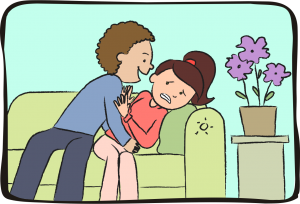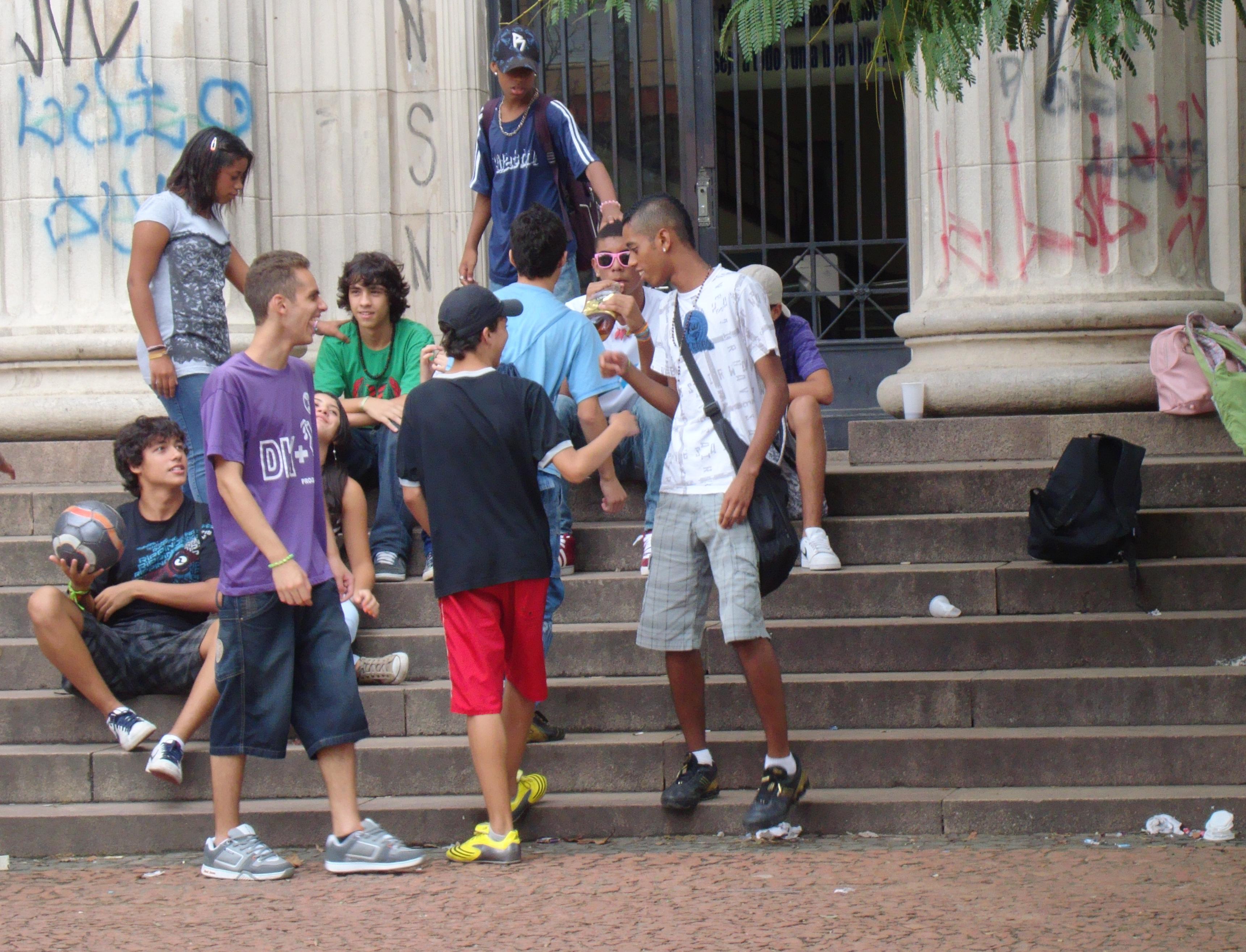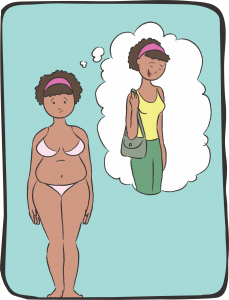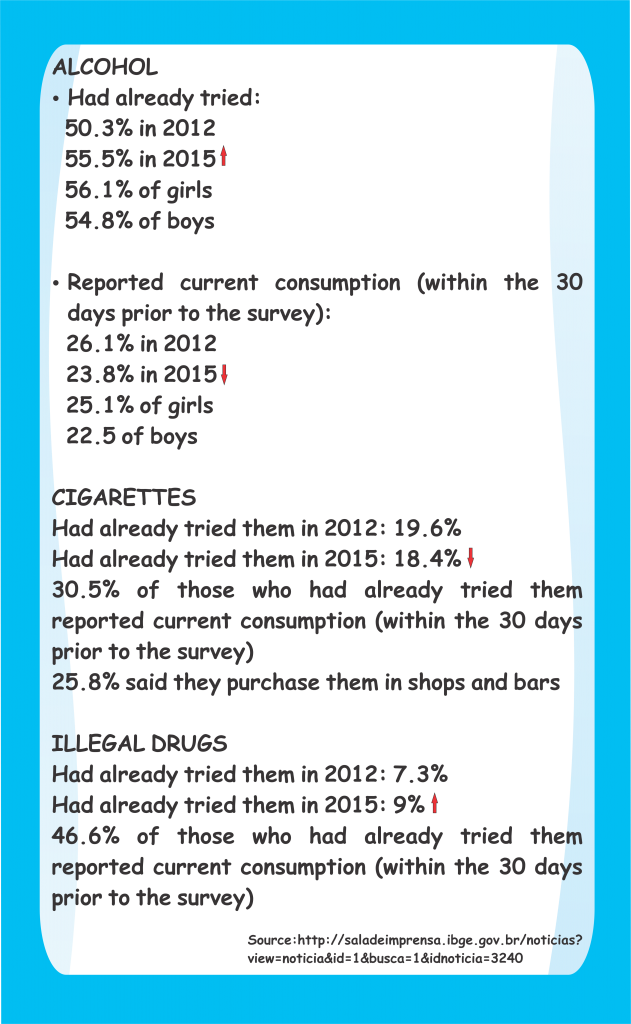After 20 years working in the area of children’s health, the Criança é Vida (Child is Life) Institute’s own experience has shown the need to expand and also involve adolescents in its activities. A need that is reinforced by the latest results of the National Survey of School Health – PeNSE.
Conducted by the Brazilian Institute of Geography and Statistics (IBGE) in 2016, the survey interviewed 2,630,835 students in the 9th grade of the public (85.5%) and private (14.5%) elementary school systems in the entire country. Students from 13 to 15 years of age were interviewed, with 51% being14-year-olds. A little more than half were girls (51.3%) and 48.7% boys. The data were released in August this year.
In its third edition, the survey – which outlines the profile of Brazilian student health – included, for the first time, data related to rape. Of all those interviewed, 4% or 105.2 thousand students said they were forced to have sex. Of these, 4.3% were girls and 3.7% were boys. When asked about the person who forced them to have sexual relations, the largest percentage of answers indicated boyfriends/girlfriends or former boyfriends/girlfriends (26.6%). Another 21.8% responded that it had been a friend, 11.9% a father, mother or stepfather and 19.7% other family members.

THE COURAGE TO SAY NO
To deal with subjects like these, the Criança é Vida (Child is Life) Institute created, in 2015, the “Issues of adolescence” project oriented toward 13-to-15-year-old teenagers, the profile group surveyed. The project expands the operations of the Institute, which has worked on sex education of children by means of two other projects since 2006: “Time of discovery” (from 7 to 9 years of age) and “Love, sex and responsibility” (from 10 to 12 years of age).
“Adolescence – growing up also means having the courage to say no” is one of the new project’s Education instructional units in which the concept of sexual violence is handled in a very direct, clear and objective way. In addition to encouraging the fight against the culture of rape, the guidebook also deals with topics, such as alcohol, cigarettes and illegal drugs, subjects that have also been addressed by the National Survey of School Health (see table at the end).
Criança é Vida (Child is Life) Institute master teacher for projects in the area of sex education and drug use prevention since 2006, biologist Célia Siqueira believes that sexual violence has always been a taboo among adolescents. For her, teenagers are just starting to take positions on this issue as they begin to receive information through the media. “Most of the young people of both sexes believe that the rape victims are somehow guilty, as another recent survey on the theme has shown. They are victims of disinformation with regard to their rights and also of the culture in which they live. In the ‘Issues of adolescence’ project of the Criança é Vida (Child is Life) Institute, we are providing information and activities for reflection in order to change the situation,” she says.

Célia highlights another important and not well-known aspect surrounding this subject: “female sexual harassment.” “A girl provoking a boyfriend or friend who doesn’t want to have sex with her, insinuating possible impotence or homosexuality – many times with verbal abuse – is an example of sexual violence, but rarely shown as such,” she explains.
THE FIRST TIME
With regard to sexual initiation, 27.5% of 13-to-15-year-old adolescents consulted by the survey had already had sexual relations at least once. Those who did not use condoms the first time they had sex accounted for 39% of the total, while 33.8% said they did not use a condom the last time they had sex. For girls with a sexually active life, 9% had already gotten pregnant (23,678), even after having previously received information in school about pregnancy prevention (79.2%) and recorded higher rates of condom use (68.7%) than the boys (56.8%).

The girls also have the highest levels of body dissatisfaction (23.3%), more than the double that of the boys (11.6%). The rates of physical aggressions suffered by adolescents are also higher among girls (15.1%) than boys (13.8%). In 14.5% of the cases, the aggressor is an adult in the family.
INSECURITY
Among the students interviewed, 18.3% feel fat or very fat. In addition, nearly 195 thousand students in the 9th grade (7.4%) said they had already been victims of bullying, while 520.9 thousand said they had already bullied others.

Physical aggression, forced sex, bullying. The statistical elements of the survey translate into numbers the reality of young people growing up with fear, low self-esteem and who, in the future, can become insecure, aggressive adults with professional and relationship problems.
In “Adolescence – a time of discoveries,” another instructional unit of the “Issues of adolescence” project, an exercise proposes that boys and girls reflect on their fears and experiments. And many of the fears mentioned relate to sexuality. Fear of the pastor or the priest, fear of homosexuality, fear of having no erection or feeling no pleasure, fear of getting pregnant or getting a girl pregnant are some of them, according to project master teacher Célia Siqueira. For her, working with themes, such as contraceptive methods and sexual diversity, the project contributes to eliminating some of these fears.

The increase in the number of students in the 9th grade (13 to 15 years of age) who had already tried alcohol is also worrisome. The number rose from 50.3% in 2012 to 55.5% in 2015. The survey also showed that consumption was higher among girls (56.1%) than among boys (54.8%).
Working for more than 40 years with education of children and adolescents, Célia believes that this adolescent behavior is the result of a misinterpretation of the notion of gender equality. “Women’s advances in terms of choosing partners and boyfriends, working at home or outside home, taking care of children or going alone to parties and dances are sometimes mixed up with traditional male roles, such as drinking too much alcohol or sexually harassing others with words or gestures,” explains the master teacher.

In contrast to the bad news, data also show that the number of adolescents drinking alcohol over the last 30 days prior to the interview decreased when compared to the previous survey: it fell from 26.1% in 2012 to 23.8% in 2015. There is also good news when it comes to cigarettes. In 2012, 19.6% of students had already tried tobacco, but in 2015, the rate decreased slightly to 18.4%. This trend is not repeated when the subject is illegal drugs. In 2012, 7.3% had already tried drugs and, in 2015, 9% had.
These numbers make us think, provide a red alert with regard to the health of young people and serve to reinforce the need to make them increasingly aware of and responsible for their own choices.

To see the complete survey (in portuguese):
http://biblioteca.ibge.gov.br/visualizacao/livros/liv97870.pdf